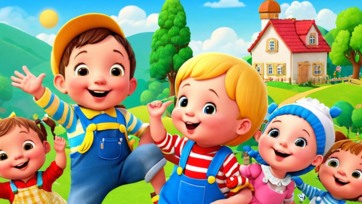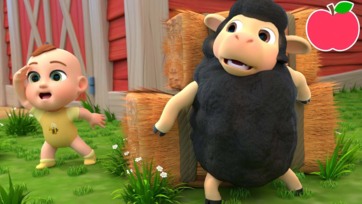The Story Behind "Baa Baa Black Sheep"
“Baa Baa Black Sheep” is a classic nursery rhyme known by children all over the world. Its catchy tune and simple lyrics make it easy for young children to remember and sing along, but like many nursery rhymes, it has an interesting history that goes back centuries. While today it’s a fun and educational song, the rhyme has also been linked to historical events and societal changes in England.
The Origins of "Baa Baa Black Sheep"
The earliest known version of “Baa Baa Black Sheep” was published in 1744 in a collection of nursery rhymes called Tommy Thumb's Pretty Song Book. However, the rhyme may have been sung by children even before its official publication, passed down orally from one generation to the next.
One of the most common interpretations of the rhyme is that it was originally written to reflect the wool tax imposed in England in the 13th century. During the reign of King Edward I, a heavy tax was levied on wool, which was one of the country’s most valuable commodities at the time. The rhyme’s mention of “three bags full” of wool is believed to symbolize how the wool was divided: one portion for the king, one for the church, and one for the farmer who grew the sheep. This historical connection gives the nursery rhyme a deeper significance, as it reflects the economic landscape of medieval England.
The Symbolism in the Lyrics
The first line, “Baa Baa Black Sheep, have you any wool?” immediately draws a child’s attention to the sheep’s wool, which was crucial to the economy and daily life at the time. Wool was used to make clothes, blankets, and other necessary items, and owning sheep was often a symbol of wealth.
The reply, “Yes sir, yes sir, three bags full,” represents the division of the profits from wool. As mentioned, some believe that the three bags refer to the taxation system of the time, with one bag going to the king (the master), another to the church (the dame), and the final one for the shepherd or farmer (the little boy who lives down the lane). This structure reflects how little was left for the laborers and farmers after taxes.
Interestingly, the “black sheep” in the rhyme may also hold symbolism. In English history, black wool was less desirable than white wool, as it couldn’t be dyed. However, in the context of the nursery rhyme, the black sheep is the one with the valuable wool, suggesting that even something seen as less valuable can contribute to society in important ways.
Educational Value for Children
Today, “Baa Baa Black Sheep” is most commonly sung as a simple nursery rhyme, often without much consideration for its historical roots. Children love the repetitive nature of the song, which makes it easy to learn. It’s one of the first nursery rhymes many toddlers memorize, and it introduces them to basic concepts of sharing and counting.
The song teaches the value of sharing, as the black sheep is willing to give away three bags of wool to others. This is an important moral lesson for young children, as sharing is a key social skill they need to develop during early childhood. The rhyme also helps children practice counting, as they learn the concept of “three” through the lyrics. Visual aids, such as pictures of the black sheep and bags of wool, are often used in educational settings to reinforce these lessons.
In addition, the song helps develop a child’s auditory and language skills. The repetitive sound of “Baa Baa” helps children recognize sounds and patterns, which are essential building blocks for language development. The simple vocabulary also makes the rhyme accessible for very young children who are just beginning to learn new words.
Controversy and Modern Adaptations
Like many traditional nursery rhymes, “Baa Baa Black Sheep” has not been without controversy. In more recent times, there have been concerns that the use of the term “black” could be seen as racially insensitive. In response to this, some schools and educators have adapted the song to use different colors or animals. For example, in some versions, the rhyme has been changed to “Baa Baa Rainbow Sheep” or “Baa Baa Pink Sheep,” although these adaptations are not as widely accepted.
Despite these changes, “Baa Baa Black Sheep” remains one of the most popular nursery rhymes for young children around the world. It’s a timeless song that combines simplicity with historical significance, making it both fun and educational for young learners.
Conclusion
“Baa Baa Black Sheep” is more than just a nursery rhyme. Its origins are rooted in England’s history, and its lyrics reflect important economic and social themes from the medieval period. Today, it serves as a fun and engaging way for children to learn about sharing, counting, and language, proving that even the simplest songs can have a lasting impact on childhood development.







